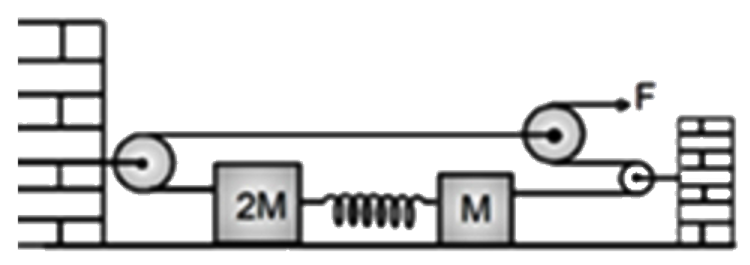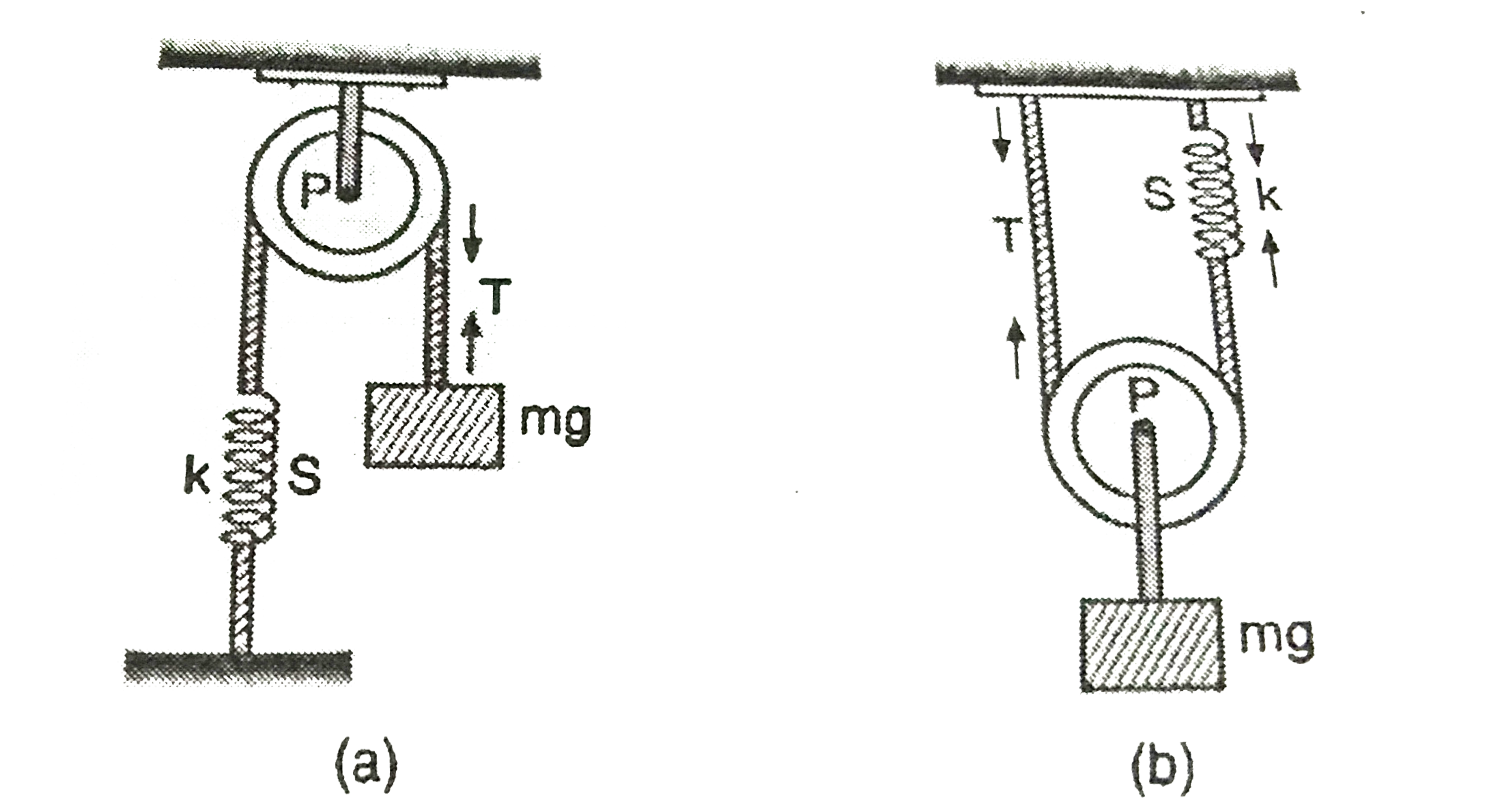In the diagram shown, no friction at any contact surface. Initially, the spring has no deformation what will be the maximum deformation in the spring? Consider all the strings to be sufficiency large. Consider the spring constant to be K.

The correct Answer is:B
Topper's Solved these Questions
- BOOK - ANURAG MISHRACHAPTER - IMPULSE AND MOMENTUMEXERCISE - L-221videos
IMPULSE AND MOMENTUM
- BOOK - ANURAG MISHRACHAPTER - IMPULSE AND MOMENTUMEXERCISE - L-3,(P-1)5videos
IMPULSE AND MOMENTUM
- BOOK - ANURAG MISHRACHAPTER - IMPULSE AND MOMENTUMEXERCISE - Example50videos
IMPULSE AND MOMENTUM
- BOOK - ANURAG MISHRACHAPTER - FORCE ANALYSISEXERCISE - Matching type13videos
FORCE ANALYSIS
- BOOK - ANURAG MISHRACHAPTER - RIGID BODY MOTIONEXERCISE - MATCH THE COLUMN12videos
RIGID BODY MOTION
Similar Questions
In the diagram shown, no friction at any contact surface. Initailly, the spring has no deformation .What will be the maximum deformation in the spring? Consider all the strings to be sufficiently large. Consider the spring constant to be K.
 View Solution
View SolutionThe spring constant of the spring shown in the figure is 250Nm−1. Find the maximum compression of the spring?
 View Solution
View SolutionWhat will be the spring constant k of a. spring if length of the spring is made n times?
View SolutionIn the situation shown in figure all contact surfaces are smooth. The force constant of the spring is K. Two forces F are applied as shown. The maximum elongation produced in the spring is how many times of F/K (initially the spring is relaxed)?
 View Solution
View SolutionIn the situation shown in figure all contact surfaces are smooth. The force constant of the spring is K. Two forces F are applied as shown. The maximum elongation produced in the spring is how many times of F/K (initially the spring is relaxed)?
 View Solution
View SolutionWhat will be the spring constant k of a spring if spring is divided in n equal parts?
View SolutionThe block of mass m is released when the spring was in its natrual length. Spring constant is k. Find the maximum elongation of the spring.
 View Solution
View SolutionThe block of mass m is released when the spring was in its natrual length. Spring constant is k. Find the maximum elongation of the spring.
 View Solution
View SolutionConsider the situations shown in fig (a) and (b) initially the spring is unstretched when the mass m is released from rest. Assuming no friction in the pulley find (a) the maximum stretch in the spring (b) stretch in the spring when the system is in equilibium.
 View Solution
View SolutionA block of mass m moving with velocity v0 on a smooth horizontal surface hits the spring of constant k as shown. The maximum compression in spring is
 View Solution
View Solution

